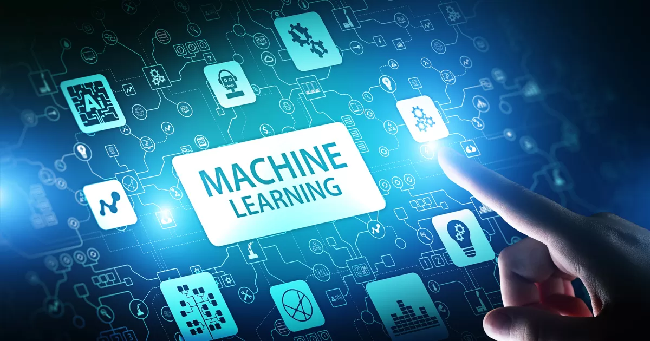- Deutsch
-
EnglishDeutschItaliaFrançais日本語한국의русскийSvenskaNederlandespañolPortuguêspolskiSuomiGaeilgeSlovenskáSlovenijaČeštinaMelayuMagyarországHrvatskaDanskromânescIndonesiaΕλλάδαБългарски езикAfrikaansIsiXhosaisiZululietuviųMaoriKongeriketМонголулсO'zbekTiếng ViệtहिंदीاردوKurdîCatalàBosnaEuskeraالعربيةفارسیCorsaChicheŵaעִבְרִיתLatviešuHausaБеларусьአማርኛRepublika e ShqipërisëEesti Vabariikíslenskaမြန်မာМакедонскиLëtzebuergeschსაქართველოCambodiaPilipinoAzərbaycanພາສາລາວবাংলা ভাষারپښتوmalaɡasʲКыргыз тилиAyitiҚазақшаSamoaසිංහලภาษาไทยУкраїнаKiswahiliCрпскиGalegoनेपालीSesothoТоҷикӣTürk diliગુજરાતીಕನ್ನಡkannaḍaमराठी
A Guide to Machine Learning
- 2024/10/15
- 28
Catalog

Understanding Machine Learning
Machine learning is a way for computers to learn from data and improve their performance without being explicitly programmed. For example, when you visit a website like YIC to search for integrated circuits, the site can remember your preferences for future visits. This personalization is an example of machine learning in action.
One interesting feature of machine learning is its ability to adapt on its own. Instead of relying on fixed programming, machine learning systems analyze data to find patterns and trends. This helps them improve their accuracy over time. For instance, streaming services use recommendation algorithms that become better at suggesting shows based on your viewing habits.
Machine learning is making a big impact in many industries:
• E-commerce - Online stores predict future purchases based on your past behavior.
• Healthcare - Systems use machine learning to diagnose conditions early by analyzing patient data.
These examples show how machine learning is transforming various fields and improving our experiences.
Different Types of Machine Learning Explained
Machine learning has three main types, each with its own way of working and different uses.
Supervised Learning
Supervised learning uses labeled data to teach models, providing the model with input data and the correct output so it can learn to make predictions. Examples include recognizing images, understanding speech, and making predictions. For instance, in medical diagnosis, models can learn from past patient data to predict future health outcomes. This method is popular because it offers clear guidance, but it requires a lot of labeled data, which can be difficult to collect.
Unsupervised Learning
Unsupervised learning works with unlabeled data, where the model tries to find patterns or groups within the data on its own. Common techniques include clustering and association, and it is used in applications like grouping customers in marketing and finding unusual patterns (anomaly detection). For example, in retail, unsupervised learning can identify customers with similar buying habits, helping businesses create targeted marketing strategies. This approach is powerful because it reveals insights without needing specific instructions, but the results can be less clear than in supervised learning.
Reinforcement Learning
Reinforcement learning (RL) focuses on learning through trial and error. An agent interacts with its environment and tries to maximize rewards over time, improving its decisions based on past experiences. It works well in situations like robotics, video games, and self-driving cars. For instance, a game-playing agent learns to enhance its strategy by playing many games. While RL is effective, it can be complex because it requires careful setup, substantial computing power, and a clear reward system to guide learning.
Main Applications of Machine Learning Across Industries
Machine learning is widely applied in areas such as:
• Virtual Personal Assistants (e.g., Siri, Alexa)
• Traffic Control for better route planning
• Social Media Customization for personalized content
• Spam Filtering to sort out unwanted emails
• Online Fraud Detection to identify unusual transactions
• Stock Market Trading for predicting stock price movements
• Medical Technology for early disease detection
• Automatic Translation for improving communication across languages
Machine Learning Challenges and Main Considerations
Machine learning involves finding answers from large amounts of data, but it has several challenges. First, good models rely on having enough high-quality training and testing data, and figuring out how much data is needed can be difficult. Efficiency is important a must too; choosing the right algorithms can speed up learning, and using techniques like transfer learning and parallel processing can help. Automated tools, such as hyperparameter tuning and AutoML, can save time and reduce mistakes, leading to more accurate models. The types of data used matter as well; combining different data types can provide better insights, and preparing data correctly is main. Expertise in the specific field is valuable for identifying important data, and having domain experts can make the process faster. Additionally, there’s a balance to strike between model complexity and interpretability: complex models can find detailed patterns but are hard to understand, while simpler models are easier to grasp but may miss details.
How to Design an Effective Machine Learning System?
Creating a good learning system takes careful planning. There are four steps to follow, and each step is main for helping you gain knowledge and skills.
Step 1: Choosing Training Experience
This step involves selecting three factors: the type of feedback (whether it's direct or indirect), the level of control the learner has over the training process, and how examples are distributed. Direct feedback provides immediate responses, like in a checkers game, while indirect feedback offers hints without direct responses. The degree of control reflects how much independence the learner has throughout the training, similar to a driving instructor gradually allowing the learner to drive more on their own. Additionally, a wider range of examples enhances the system's performance.
Step 2: Choosing the Target Function
This step defines what knowledge the system will acquire and how it will apply that knowledge. Using the checkers game example, the target function specifies the moves that lead to winning, like moving forward, jumping, or swapping pieces. In machine learning, this might involve selecting a function F(x) based on the game's outcome, with different scores for winning, losing, drawing, or ongoing states.
Step 3: Choosing Representation of Target Function
In this stage, the system calculates the target function based on various board features, such as the number of pieces and their positions. The representation can be expressed as a linear combination of these features, where weights (W0 to W6) determine the importance of each factor, helping the system evaluate the board state effectively.
Step 4: Choosing a Learning Algorithm
Selecting a learning algorithm is great for approximating the target function. This involves using training examples that describe specific board states and their associated values. To estimate the training values, the algorithm considers the potential outcomes of moves. For example, if a black piece wins, the relevant features would be adjusted accordingly. The Least Mean Squares (LMS) algorithm is often used to minimize error in weight adjustments. It adjusts weights based on whether the error is zero, positive, or negative, using the formula:
Refining and Finalizing Your Machine Learning System Design
A learning system improves over time through four main parts: the Performance System, the Critic, the Generalizer, and the Experiment Generator.
The Performance System is responsible for handling problems and tasks. It takes in information, processes the data, and carries out the main tasks. You can think of this like the first step in customer service, where a representative uses initial information to assist a customer. Adding predictions about what might happen next could make this process even better.
After the Performance System works with the data, the Critic evaluates the results by giving feedback on past performance and pointing out strengths and weaknesses. This is similar to a quality control team in a factory that checks if products meet certain standards. Serious evaluation helps us understand our true performance.
Next, the Generalizer uses feedback from the Critic to find patterns and create ideas. It looks for and understands these patterns, applying specific cases to broader ideas. This is like a research and development team in a tech company that uses insights from testing to improve future products. Learning from actual helps the system adapt better and make predictions.
Finally, the Experiment Generator tests the ideas formed by the Generalizer. It creates experiments and conducts tests to confirm or challenge these ideas. This step is similar to scientific research, which aims to improve the system’s accuracy and reliability. Although this stage might seem less relevant, real learning truly comes from thorough testing.
Concept Learning in Machine Learning
Concept learning helps machines understand categories by learning from examples. For instance, machines can tell the difference between a tablet and a smartphone by recognizing features like screen size and operating system.
The main goal is for machines to create rules that help them classify new items. They use two main methods:
• Symbolic Representations - This includes decision trees that ask questions about features to classify items easily.
• Statistical Techniques - These use probability to make educated guesses, helping in areas like healthcare for diagnosing diseases.
While concept learning is valuable, it has challenges like overfitting (learning noise instead of useful patterns) and the need for interpretability (making sure decisions are clear and understandable).
Conclusion
Machine learning greatly improves systems' ability to self-improve and has a wide impact across industries like healthcare, finance, manufacturing, and retail. It helps in making relevant decisions, optimizing processes, and predicting future trends with accuracy. Main steps in designing an effective learning system include data collection, preprocessing, model selection, training, evaluation, and deployment. Addressing challenges like data quality and model interpretability is primary for building reliable systems. As machine learning evolves, continuous learning and adapting to new techniques are major for staying competitive and driving innovation in this rapidly changing field.
Verwandter Blog
-
Verständnis des C1815 -Transistors: Pinouts, Schaltungssymbole, Anwendungsschaltungen

2023/12/20
Welche Art von Röhre ist der C1815?C1815 Triode PinoutC1815 ModellzeichnungC1815 -ParameterC1815 EigenschaftenAnwendung von C1815 Der C1815 -Transist... -
Ein Überblick über TTL- und CMOS -ICs und wie Sie zwischen ihnen wählen

2024/04/13
In diesem Artikel werfen wir einen detaillierten Blick auf zwei wichtige elektronische Technologien, komplementäre Metaloxid-Halbleiter (CMOS) und Tr... -
Netzteilspannung Abkürzung: VCC VDD VEE VSS GND

2024/06/6
Im modernen elektronischen Schaltungsdesign, Verständnis der Abkürzungen der Stromversorgungsspannung (wie VCC, VDD, VEE, VSS, GND).Diese Abkürzung... -
LR44 -Batterien: LR44 -Batterieäquivalente und LR44 -Batterieersatz

2024/01/24
In einem sich schnell entwickelnden technologischen Gebiet, in dem die Größe der elektronischen Geräte weiter schrumpfen und dennoch alltäglicher ... -
Verschiedene Arten von Sicherungen und Anwendungen

2024/04/18
Sicherungen sind wesentliche Komponenten in modernen elektrischen Systemen und fungieren als entscheidende Beschützer vor Überstrom.Sie arbeiten, in... -
Beschreiben Sie kurz die Spezifikationen, Verpackungen, das Arbeitsprinzip, die Vorteile und die Umweltauswirkungen von Lithium-Ionen-Batterien

2024/03/20
Seit der Einführung von wiederaufladbaren Blei-Säure-Batterien im Jahr 1859 wurden sie allmählich in den Gewebe des technologischen Fortschritts ei... -
Leitfaden zu Buck-, Boost- und Buck-Boost-Konverter

2023/12/21
Was ist ein Buck -Konverter?Wie funktioniert ein Buck Converter?Was ist ein Boost -Konverter?Wie funktioniert ein Boost -Konverter?Was ist ein Auftrie... -
Grundkenntnisse über Sicherungen: Merkmale, Arbeitsprinzipien, Typen und wie man richtig auswählt

2024/04/10
Sicherungen schützen Schaltungen vor Schäden aufgrund von Überlastung oder Kurzstrecken.Dieses einfache, aber geniale Gerät basiert auf einem leic... -
Transistor (BJT und MOSFET) Arbeitsprinzipien

2023/12/20
Arbeitsprinzip des bipolaren Junction -Transistors (BJT)Auswahl der KomponentenwerteWie wählen Sie einen Transistor?Arbeitsprinzip von MOSFETWie scha... -
Beherrschen analoge und digitale Schaltungen: Ein Anfängerführer

2023/12/20
Definition und Eigenschaften von analogen Schaltungen und digitalen SchaltungenDer Unterschied zwischen analogen Schaltungen und digitalen Schaltungen... -
Transistor umfassender Leitfaden

2023/12/20
1. Was ist ein Transistor?2. Wie funktioniert ein Transistor?3. Vorteile von Transistoren4. Arten von Transistoren5.faq 1. Was ist ein Transistor? Ein... -
Eine vollständige Liste von Testmethoden für verschiedene Transistoren

2023/12/20
Der Transistor wurde von John Bardeen, William Shockley und Walter Brattain erfunden.Es handelt sich um ein Kollektor-, Emitter- und Basis-Drei-termin... -
Grunde elektronische Grundkomponenten verstehen - Widerstände, Kondensatoren, Dioden, Transistoren, Induktoren und digitale Logik -Tore

2024/04/13
Elektronische Komponenten sind der Eckpfeiler des Bauens und der Optimierung elektronischer Schaltkreise.Von gewöhnlichen Haushaltsgeräten bis hin z...
